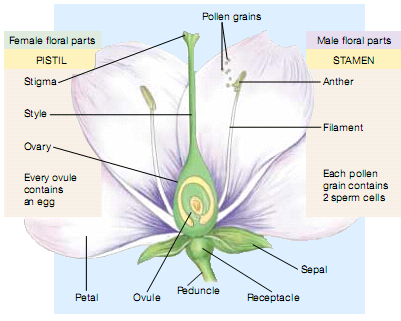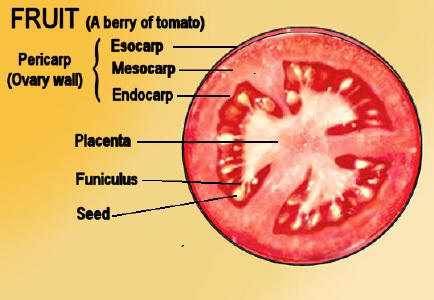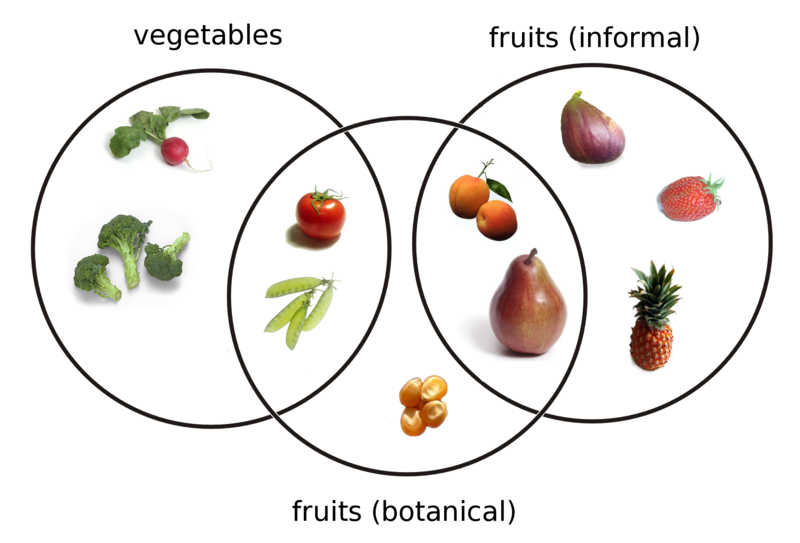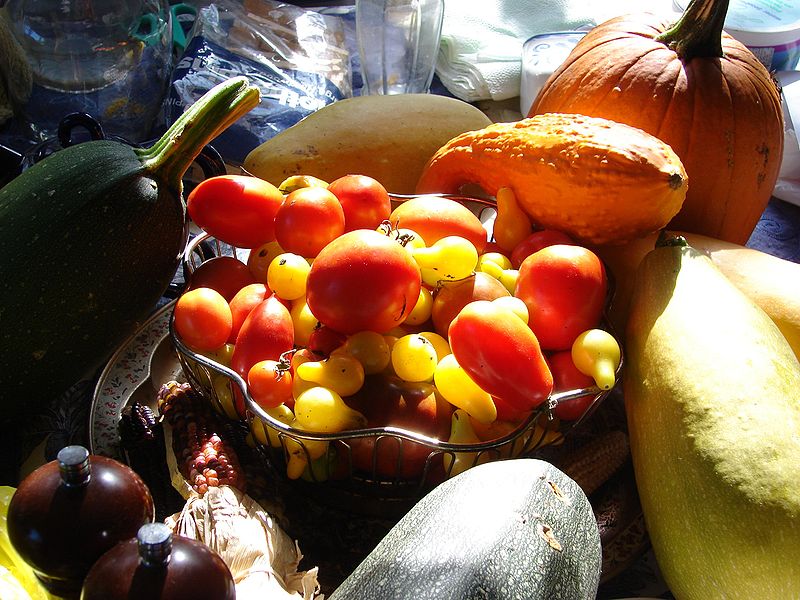- Учителю
- Конспект урока по билингвальной биологии на тему Цветок и структура Плода
Конспект урока по билингвальной биологии на тему Цветок и структура Плода
</<font size="3">Grade: 7th class Time: 45 min. Topic: Reproductive organs of plants
THE STRUCTURE OF FLOWER
Flowers are reproductive shoots usually composed of four parts; sepals, petals, stamens, and carpel (pistil). The primary purpose of a flower is reproduction.
Pollination is the movement of pollen from the anthers to the stigma.
Sepals, are leaflike in appearance and often green. Sepals cover and protect the other flower parts when the flower is a bud.
The collective term for all the sepals of a flower is the calyx. Petals play an important role in attracting animal pollinators to the flower. The petals of a flower are referred to collectively as the corolla
In the center of most flowers is one or more carpels, the"female" reproductive organs. The female part of the flower is also referred to as a pistil. Each pistil has three sections: a stigma, on which the pollen grain lands; a style, a neck-like structure through which the pollen tube grows; and an ovary, an enlarged structure that contains one or more ovules. The egg participates directly in fertilization, and, following fertilization, the ovule develops into a seed and the ovary into a fruit.

THE STRUCTURE OF FRUIT
A fruit develops from the ovary wall (is a part of the female reproductive organ of the flower ) after fertilization. Fruits Although fruits provide some protection for developing seeds,their primary function is to promote seed dispersal. The angiosperms produce many different types of fruits, which develop from parts of flowers. Many fruits are eaten by animals. The seeds are dispersed as they pass undigested from the animals' bodies. Other fruits have structures that help them float on wind or water. Some fruits even forcefully eject their seeds, flinging them away from the parent plant.
Structure: A fruit, ripened ovary, has three major regions that are sometimes difficult to distinguish from each other. The outer layer, sometimes referred to as the skin, is actually called the exocarp. The mesocarp is the fleshy portion which is usually eaten when consuming fruit. The endocarp is the innermost boundary around the seed. Sometimes the endocarp is hard and stony such as a peach pit that surrounds the seed. The endocarp can also be papery as in apples, where it is barely visible in cross section. All three of these regions; the exocarp, mesocarp and endocarp, are collectively called the pericarp. The pericarp can be quite thin, as is the case with dry fruits.
Some fruits have flower parts modified or fused to the ovary at maturity. Fruits are classified according to features at maturity: fleshy, dry, split exposing seeds, non-splitting, one ovary or multiple ovaries. We will go through these various classifications and see what examples fall into the various categories.

Function; in flowering plants, it provides protection of seeds and to help dispersal to colonize new areas. They are classified into 4 groups according to their structure.
-
Simple Fruits; develop from a flower with only one pistil .Simple fruits can be either dry or fleshy fruits;
a)fleshy fruits ; their Pericarp are soft. examples; tomato, avocado, plum, cherry, peach, apricot, olive, banana, strawberry
b) dry fruits; their Pericarp is not fleshy. examples; dandelion seeds, (wheat, pea, bean, peanut, carrot seed, beet)
2) Aggregate Fruits ; develop from a flower with numerous simple pistils. example; blackberry . but strawberry is also an aggregate-accessory fruit
3) multiple fruits ; is one formed from a cluster of flowers (called an inflorescence). Each flower produces a fruit. Examples; pineapple, edible fig, mulberry, osage-orange, and breadfruit.
4) accessory fruits; are also known as false fruits or pseudocarp. Why. Because they are composed of plant tissue that is not produced by ovary wall. Examples; Strawberry, Fig ,apples and pears with the core being the true fruit
Uses
Many hundreds of fruits are commercially valuable as human food, they are eaten as jams, marmalade and other preserves. Fruits are also in manufactured foods like ice cream, cakes. Many fruits are used to make beverages, such as fruit juices or alcoholic beverages, such as wine. Apples are often used to make vinegar.
Many vegetables are botanical fruits, including tomato, bell pepper, eggplant, okra, squash, pumpkin, green bean, cucumber and zucchini.[24] Olive fruit is pressed for olive oil. Spices like vanilla, paprika, allspice and black pepper are derived from berries.[25]
Fruits are generally high in water and vitamins like vit. C. they are important for disease prevention.
Many fruits provide natural dyes, e.g. walnut, sumac, cherry and mulberry.Dried gourds are used as decorations, water jugs, bird houses, musical instruments, cups and dishes. Pumpkins are carved into Jack-o'-lanterns for Halloween.
Safety; For food safety, the CDC recommends proper fruit handling and preparation to reduce the risk of food contamination and foodborne illness. Fresh fruits and vegetables should carefully be selected. At the store, they should not be damaged or bruised and pre-cut pieces should be refrigerated or surrounded by ice. All fruits and vegetables should be rinsed before eating. This recommendation also applies to produce with rinds or skins that are not eaten. It should be done just before preparing or eating to avoid premature spoilage. Fruits and vegetables should be kept separate from raw foods like meat, poultry, and seafood, as well as e.g. cutting boards that has come in contact with it. Fruits and vegetables, if they are not going to be cooked, should be thrown away if they have touched raw meat, poultry, seafood or eggs. All cut, peeled, or cooked fruits and vegetables should be refrigerated within 2 hours. After a certain time, harmful bacteria may grow on them and increase the risk of food borne illness.
Storage; Maintaining fruits in an efficient cold chain is optimal for post harvest storage. The aim is to extend and ensure shelf life. All fruits benefit from proper post harvest care.

